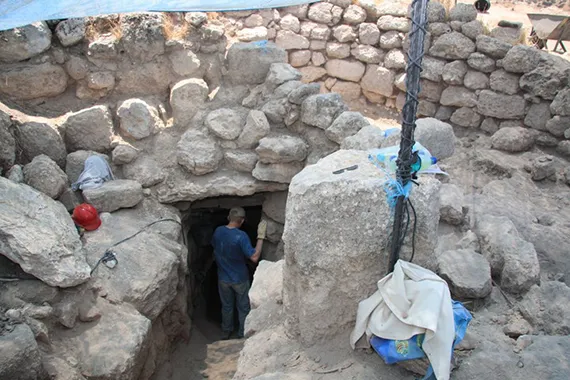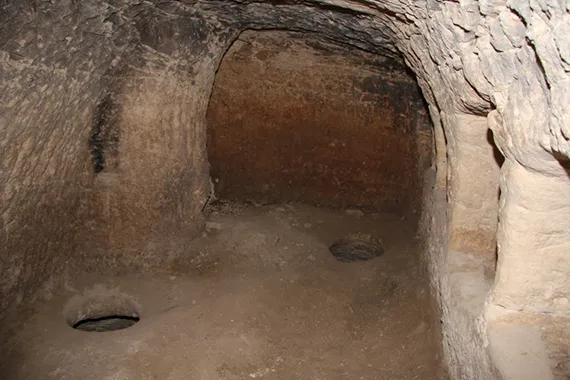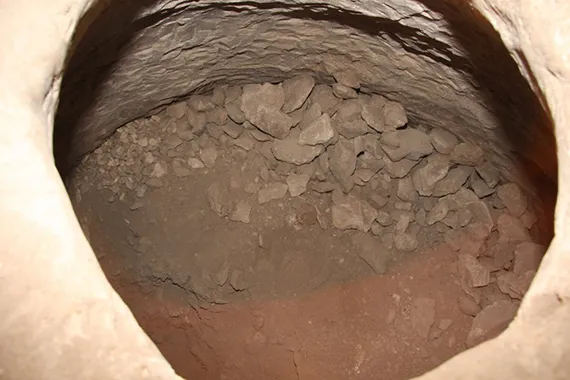
Subterranean Stable
A rock-hewn subterranean stable was discovered to the west of the Large Columbarium, entered by means of a narrow, five-stepped passageway. The stable was divided into two chambers by a wall, with the opening to the second chamber on its left side. The stable consists of six feeding troughs, accessible by either side, at a height of nearly two feet from the floor. Bored holes, to which the rope that held the animals was tied, are seen between the troughs and on the doorposts. The stable apparently housed donkeys and sheep since the ceiling would have been too low and the space too cramped for horses.
The second chamber contains two hewn pits (1.3 feet deep) in which the feed may have been prepared. Niches for oil lamps are seen along the stable walls. An alcove is seen in the northeastern wall, its purpose unknown. A large basin was discovered in the northeastern corner, and apparently served as a water trough. Five large bell-shaped basins (6.5 feet deep) were carved into the floor of the stable, two in the first chamber and three in the second chamber. The stepped passageway is the sole entry into the unique underground stable where animals were housed for safe keeping from predators and the heat of the day. One theory is that they collected the donkeys’ urine, which was used to produce ammonia for fertilizer. It is not known for certain when the stable was constructed and for how long it remained in use. The stable appears to have been built between the 4th and 1st centuries B.C.
It gives perspective to the manger that the Christ-child was born in, as it was both a stable and subterranean. The traditional site of Christ’s birth at Bethlehem is found underground in a cave, under the Church of Nativity. Numerous other subterranean caves have been found and are being excavated at Beit Lehi.
Video
Video Transcript
We are in the subterranean stable dated to the third or the second century B.C.E. It was in use until the 1st century C.E. until the destruction of the settlement in the end of the Second Temple period. We have six mangers where the animals, probably donkeys, ate and were fed. Below the mangers we uncovered two urine pits where the urine of the animals was collected and used as a fertilizer for the fields. On the other side there’s another room where another six or seven animals, donkeys as well, could be held, with a trough for water.
Virtual Tour
The virtual tour for this location works on your computer web browser as well as a tablet or a phone. Best of all, it works on your headset. For instructions using an Oculus Quest, please see our virtual visit page.
Image Gallery







